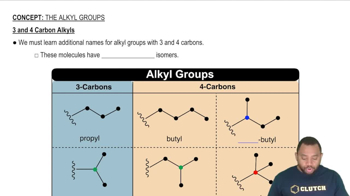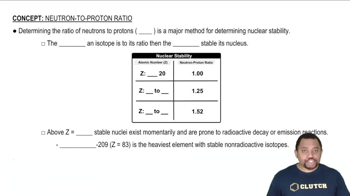Here are the essential concepts you must grasp in order to answer the question correctly.
Carbon Dating
Carbon dating is a method used to determine the age of organic materials by measuring the ratio of carbon-14 to carbon-12 isotopes. Living organisms maintain a consistent ratio of these isotopes while alive, but upon death, carbon-14 decays at a known rate (its half-life is about 5730 years). By comparing the current ratio of carbon-14 to carbon-12 in a sample to that of living organisms, scientists can estimate the time since the organism's death.
Recommended video:
Half-Life
The half-life of a radioactive isotope is the time required for half of the isotope in a sample to decay into a different element or isotope. For carbon-14, this half-life is approximately 5730 years. Understanding half-life is crucial for calculating the age of a sample based on the remaining amount of carbon-14, as it allows for the determination of how many half-lives have passed since the organism died.
Recommended video:
Isotope Ratios
Isotope ratios refer to the relative abundance of different isotopes of an element in a sample. In the context of carbon dating, the ratio of carbon-14 to carbon-12 is used to assess the age of organic materials. A decrease in the carbon-14 to carbon-12 ratio over time indicates the passage of years since the organism's death, allowing for age estimation based on the remaining isotopes.
Recommended video:
 Verified step by step guidance
Verified step by step guidance

